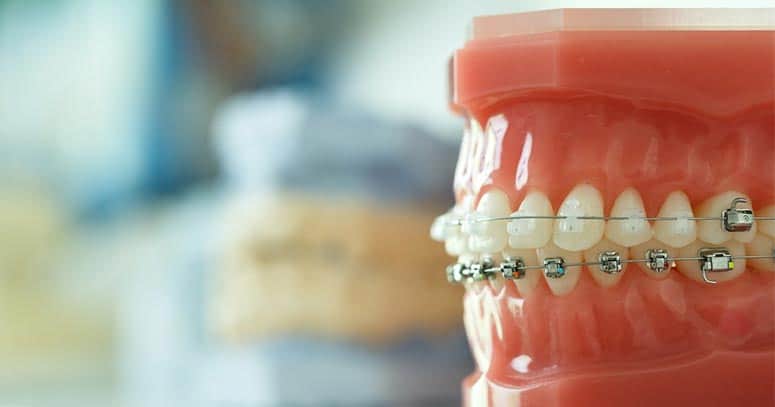
An overbite is a type of malocclusion, or misalignment of the teeth. Basically, the upper front teeth overlap the lower front teeth excessively when the mouth is closed. The overlap might even be so severe that the lower teeth touch the gums behind the upper teeth.
Because the teeth aren’t lining up as they should, an overbite needs to be corrected. If you’ve been diagnosed with an overbite and you’re interested in learning more about the treatment options available, check out the information below.
Need overbite treatment? Being patient is necessary, as this type of correction generally occurs over a long period of time. Also, the older you are, the more difficult the treatment may be, as correction is typically easier in youngsters whose jawbones are still developing.
To put it in perspective, a child might be fitted with an appliance that helps the jaw develop properly, and braces may be used as well. On the other hand, an adult might need to be fitted with braces to straighten the teeth, and then the teeth may need to be moved further to resolve the overbite, and all of that could take as long as two years or more.
The earlier an overbite can be treated, the better. So if your child is diagnosed with this malocclusion, it’s best to not wait before working with a professional who can realign the teeth and jaw.
Are you concerned about what you should expect when seeing the orthodontist for the first time regarding an overbite? Have no fear, as it’s pretty straightforward.
First, the orthodontist will examine your mouth and the position of your teeth and jaw, and x-rays will be taken to see even more detail and to determine the best course of action.
To treat an overbite in a child or a teen, an orthodontist might recommend removing certain baby teeth, if necessary, in order to create more space for adult teeth to come in nice and straight. If a child is going through a growth spurt, a growth modification device might be employed in order to help position the jaw so that it’s in perfect alignment. And to straighten teeth and correct jaw alignment, braces may be necessary. After the braces are removed, a retainer might be beneficial when it comes to keeping the newly aligned teeth in place permanently.
If you’re an adult with an overbite that hasn’t yet been treated, your orthodontist might recommend using braces to move teeth that need to be straightened, as doing so could help correct the misalignment. However, you might also need to have teeth extracted if the overbite is severe and your teeth need to have more space to move into alignment. Also, adults who have an overbite because of a problem with their jaw might need to undergo surgery.
Failing to treat an overbite might lead to other health problems, such as damage to the teeth, temporomandibular joint disorder (TMD), headaches, discomfort while eating, difficulty opening and closing the mouth, trouble speaking, and sleep apnea. So even though braces might be embarrassing, especially for adults, it’s important to resolve this condition as soon as possible.
Your dentist can look for signs of an overbite and provide valuable advice with regards to available treatments. He or she may even refer you to an orthodontist, who can then give you the best care possible. Throughout this process, having the right dental insurance could help reduce your out-of-pocket costs so you don’t have to wait to get the help you need.
An overbite can be embarrassing, and it could cause other health problems if left untreated. The good news is that it can often be fixed with orthodontics, and once the jaw and teeth are properly aligned, you’ll feel better and be ready to show off your gorgeous smile.
Copyright © 2020 Spirit Dental & Vision - Marketing and Website provided by 'corePHP'